Rebecca Jenkins: Co-Creating Change
How Superintendent Rebecca Jenkins established an intergenerational school leadership model at Libertyville District 70


Co-Creating Change
An Intergenerational School
Leadership Model
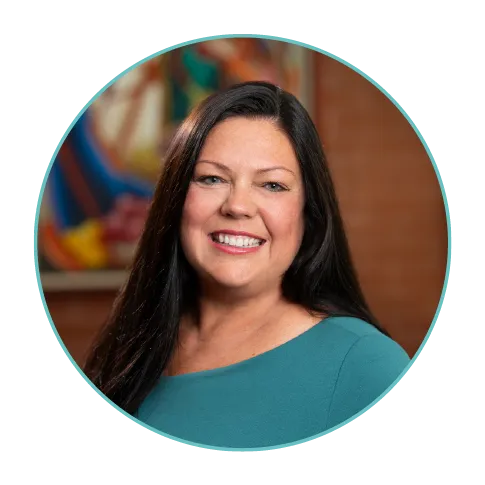
Rebecca Jenkins is the superintendent of Libertyville School District 70, an Illinois district serving students pre-K through eighth grade. Before moving into district administration, Jenkins worked as a teacher and a building administrator. She is known for her highly collaborative leadership style and her passion for elevating the voices of students. In this perspective, Jenkins shares why it's so important to involve students in their own learning and how she has managed to co-create change in an elementary-middle school district.
About 40 miles north of Chicago on a brisk winter evening, a school board room is packed. Roll is called, as usual, and the first two speakers of the evening take the microphone. Ishmael and Francis clear their throats and introduce themselves as eighth grade students representing the Superintendent’s Student Leadership Advisory Council (SSLAC, pronounced “slack”). “But that’s not what we do with our school work!” they joke.
The topic of the evening is the School Improvement Plan at Libertyville School District 70’s only middle school. As though they are seasoned educators, the students explain the plan’s main goals, from increasing achievement to enhancing engagement. With confidence, they advise on iterations of the plan that they believe are needed to achieve success. Part of their revised plan includes gathering student feedback to enhance the student experience at recess and lunch.
Board and community members alike are intently focused as the two settle into a compelling and concise board presentation, collaborating with the adults in the room as their equals. The students’ voices are steady as they take turns walking the room through the plan, detailing the roles everyone will play in the steps ahead.
This is the first-ever SSLAC presentation to the board, but it won’t be the last. The next month, Ishmael is back with an update, and the following month, the council reports on a meeting with the facilities and operations department, during which they set priorities for beautification work over the summer.
As you can see, student collaboration and involvement in Libertyville School District 70 is active and essential not only to school-level decision-making but also to district- and board-level processes. It’s a philosophy of school management that has bridged the generation gap in our school system.
Why Student Leadership
in Middle School Matters
According to Gallup research released in June 2023, today’s secondary students, on average, rate their schools with a B-minus. Another Gallup survey released in August 2024 reported that between 25% and 54% of students say they are not having engaging experiences in school. “Less than half of students say their schoolwork positively challenges them (49%) or aligns with what they do best (46%),” the report says.
These survey results are not outliers; dissatisfaction has become the trend among young learners. If we want students to thrive, to be engaged in their learning and to feel proud of their school environment, then we must include them in building that environment.
You are never too young to share your voice and help drive the direction of the organization that serves you. Our students must have an authentic place at the table in our organization to share their experiences, feelings and hopes for the future of our district.
Listening as a Foundation
When I assumed my role as superintendent of Libertyville District 70 in 2022, I began a listening tour. I was determined to bring student voices into the heart of the district’s decision-making process. In addition to staff and families, I met with students at each of our elementary schools, as well as our middle school. I asked questions like: “What is going well? What do you like about your school? Your principal? Your teachers? Are you cared for? Are you learning?” I always ended with, “What can we do better?”
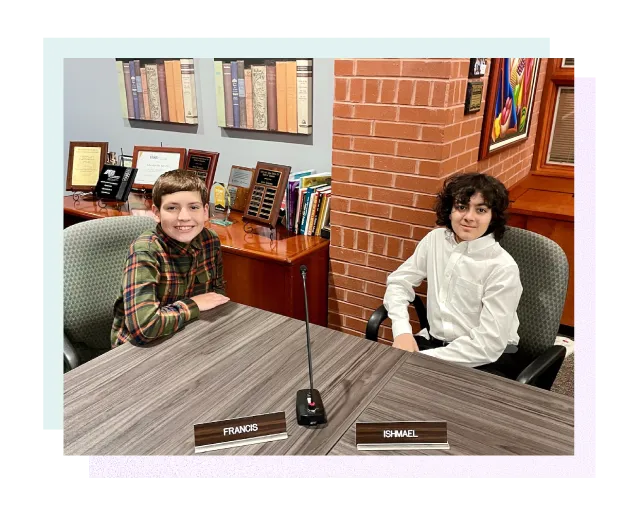
Those initial listening meetings inspired me to formalize the effort to listen to our students on an ongoing basis. That’s why we invited students to participate in the district’s strategic planning process and formed SSLAC.
The students helped inform what it was like to be a student in District 70 and what they hoped to see in the future. When they spoke at the strategic planning meetings, you could hear a pin drop. Their voices were instrumental in our five-year plan. Participating gave students a valuable learning opportunity as well. “Working alongside Superintendent Jenkins, district leaders and other students, I learned how to articulate my ideas and contribute to meaningful change,” says Alanna, a leading member of the inaugural SSLAC and an important member of the strategic planning committee.
After witnessing the success of the strategic planning process, we added an honorary seat for SSLAC at the district board meetings. Our board president, Jennifer Khan, was all in on the idea. “It is so clear we need students here,” she said to me. “If we didn’t include our students and their voices, we would be doing them a disservice. Their involvement is critical to our success as a district.”
We offered the experience of sitting in on board meetings to all SSLAC members, rotating who attended so that no one member would feel overburdened. To accommodate our middle school members, we committed to providing transportation to the meetings. SSLAC also agreed as a council to create every board presentation together. That way, even though only one SSLAC member would be physically present at each board meeting, the message would still be representative of all their voices.
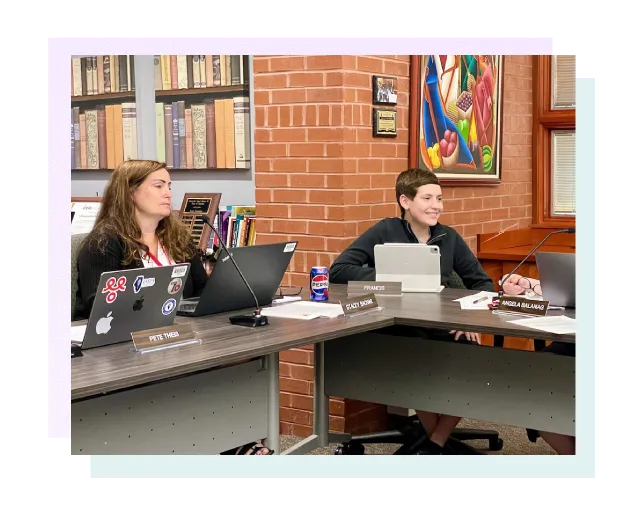
Creating the presentation together as a council also allowed the students to feel confident, prepared and supported. “Middle school is a key time when our students start figuring out who they are and where they fit in,” explains our middle school principal, Dr. Jon Hallmark. “Giving them a platform to share their ideas at the building and district levels shows them that their opinions matter.”
Students as Co-Creators
Of course, the goal of instilling systemic collaboration between students and district leaders in District 70 was about students feeling heard—but it was also about laying the groundwork for long-term success.
Alanna recalls a SSLAC meeting where the discussion focused on ways to improve recess. “We thought an obstacle course would be more engaging,” she says. “I was surprised how quickly it was embraced by Dr. Hallmark. At the next meeting, he shared ideas of how we could make it happen and involve the family association and the foundation. Although the obstacle course isn’t there yet, he showed me that our ideas were valued and that we could make a real impact.”
This kind of empowerment is essential for fostering a culture of innovation and belonging. By listening to our students, we are doing more than addressing their immediate needs; we are creating a precedent that our school is a place where they belong and matter. This approach has become a cornerstone of the district’s strategic planning process, where student input has been instrumental in shaping long-term goals.
Every initiative that comes to my desk or the board now has a student engagement, feedback or voice component—thus ensuring that the district remains dynamic and responsive to the needs of our community. Our students are not just the recipients of our educational efforts but co-creators of the educational environment. Their input ensures that our district’s practices and policies are forward-thinking, setting the stage for continued success in the years to come.
Looking back, I can also see how deliberately inviting students to the table in our strategic planning process has led board members and other staff in the room to recognize the importance of student presence and voice. This cultural shift is evident in how students and staff interact in our district. Students are no longer passive participants but active contributors to the decision-making process. This change fosters a sense of ownership and responsibility among students, which drives them to be more engaged in their learning and more invested in the success of their school community.
How to Create Structures that
Activate Student Voice
Activating student voice within the district has required thoughtful and deliberate systems. These structures support the adoption and sustainability of involving student voices within the existing flow of school and district management.
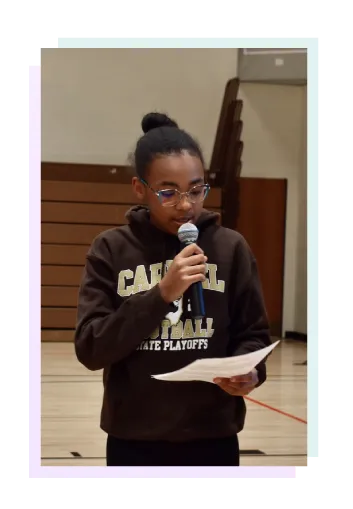
Establish a Framework
Distributive leadership models work with adults in education, and they work with students, too. Take great care to ensure your framework for student voice represents a diverse range of students in terms of age, gender, demographics and interest areas. Develop a regular cadence of meetings and give students autonomy. SSLAC students did just that by setting agenda items, leading discussions and taking on follow-up tasks. This framework for engagement gives students a voice and serves as a training ground for future leaders, helping them develop skills in communication, negotiation and collaboration.
Invite and Instruct
Instilling student voice as a cornerstone of district processes and systems begins with students being in the right rooms at the right times. Invitations are required; otherwise, the students will not be there to represent their peers. When you invite students, ensure that they, as well as the adults or leaders in the room, understand their roles and responsibilities. This shared understanding of instructions helps students feel comfortable sharing their ideas and challenging the status quo, while adult leaders are encouraged to listen with open minds.
Expand Access and Offer Respect
Another effective strategy employed by Libertyville District 70 is rotating student representatives from the diverse SSLAC group at school board meetings. The rotating system allows board members to hear different perspectives from a wide range of middle school students—and prevents any one student from being overburdened. This creates space for students to pursue and present specific passion projects while ensuring that student voice is consistently represented at the highest levels of decision-making.
I want to point out that this culture of respect is foundational to the district’s success. When students feel respected and valued, they are more likely to engage deeply with their education and contribute meaningfully to the school community.
The Long-Term Impact of Student Voice
Our district can already see how incorporating student voice has impacted problem-solving, school environment and culture. While the district has yet to realize the true long-term effects of integrating student voices into district decision-making, there is clear evidence that students who feel valued and heard develop a stronger sense of ownership over their education. Time will tell whether this effort will lead to higher levels of engagement and academic achievement.
In the future, as these students move on to higher education and eventually into their careers, they will carry with them the skills and values they have learned—collaboration, leadership and a commitment to innovation. This creates a ripple effect as future generations of students continue to benefit from the cultural shifts initiated by those who came before them.
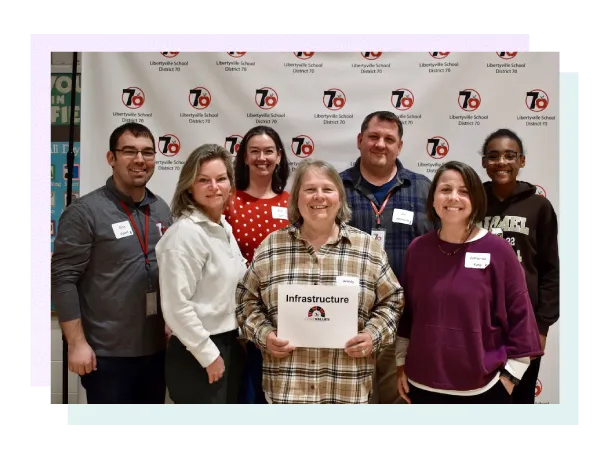
I believe the collaboration and innovation that have taken root in Libertyville District 70 can be a powerful example for other districts. By committing to student voice and cross-generational collaboration, districts across the country can not only meet the needs of today’s students but also set the stage for success for generations to come.
The integration of student voice is not a one-time initiative for us in Libertyville District 70 but a sustained effort that continues to shape the district’s future. I echo Alanna’s wise words: “Each time I see other students’ bright, eager faces, knowing I helped make them excited for school makes me extremely proud.”

